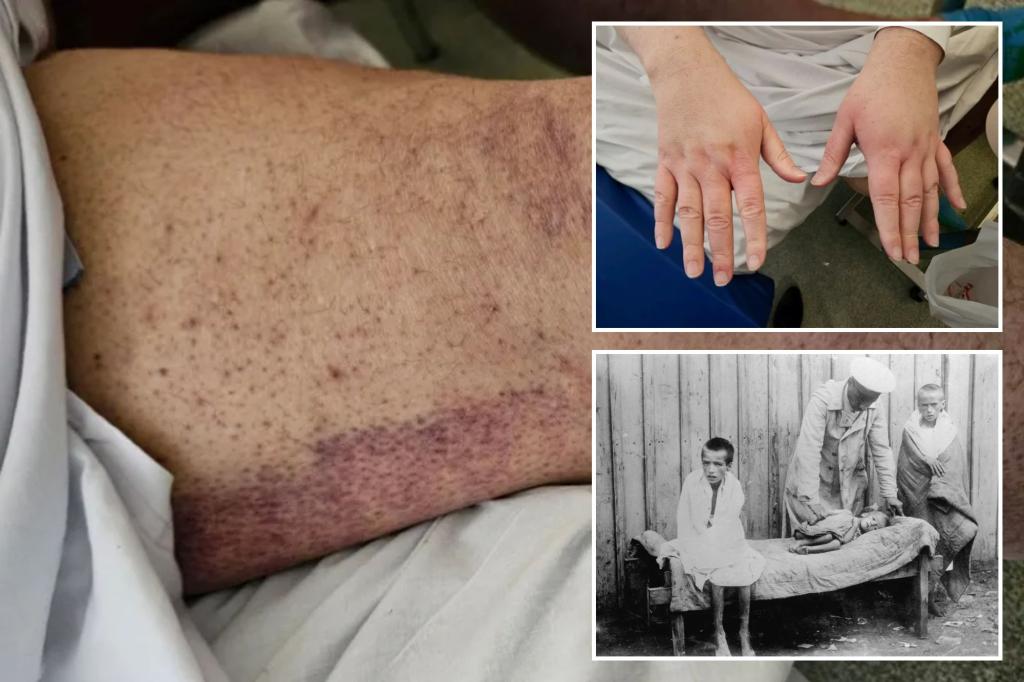Oh, are you kidding?
Scurvy, the vitamin C deficiency that plagued sailors and pirates centuries ago, seems to be making a comeback again thanks to the rising cost of living and the popularity of weight loss surgery. discovered in new research.
“Scurvy is still considered a disease of the past, especially in developed countries,” Australian doctors wrote in Tuesday’s paper. Journal BMJ Case Report. “However, scurvy can occur sporadically, especially in the elderly, alcoholics, and children with mental illness or developmental problems.”
Doctors at Sir Charles Gardner Hospital in Western Australia reported the case of an unemployed ex-smoker in his 50s who developed a painful rash on both his legs that seemed to come out of nowhere.
Blood was detected in his urine, and he was suffering from anemia with a low red blood cell count.
The unidentified man had tested negative for inflammatory, autoimmune and blood disorders, leaving paramedics a little confused. A scan found no evidence of internal bleeding, and a skin biopsy yielded no clues.
Meanwhile, while in the hospital, the rash spread, causing more bruising, swelling, and pain on both legs.
Finally, a nutritional panel showed undetectable vitamin C levels and other nutritional deficiencies.
Doctors found that the Australians’ “living conditions were poor.”
“Due to financial constraints, he neglected his dietary habits. His diet consisted primarily of processed foods and lacked vegetables and fruits,” the case report states. . “Sometimes he would skip meals, but this has increased in frequency in recent weeks. He also stopped taking the vitamin and mineral supplements he was prescribed after gastric bypass surgery because he couldn’t afford them. I was doing it.”
Eight years ago, the patient underwent a sleeve gastrectomy, in which a large portion of the stomach was removed, in order to lose weight.
A man diagnosed with scurvy took 1,000 milligrams of vitamin C, 125 micrograms of vitamin D3, 5 milligrams of folic acid, and a multivitamin daily.
A nutritionist devised a meal plan that required the man to eat one lemon every day. The rash has subsided and there is no more blood in the urine.
Study authors report that risk factors for scurvy include malnutrition, gastric bypass surgery, dialysis, alcoholism, psychiatric history, and eating disorders.
“This disease is easily reversible with supplements, with dramatic responses seen within 24 hours,” the doctors wrote. “Early detection and prompt treatment are important as untreated bleeding can lead to fatal bleeding.”
In the United States, A recent study found that The incidence of scurvy in children more than tripled from 8.2 per 100,000 in 2016 to 26.7 per 100,000 in 2020.
Patients tended to be younger, male, obese, and from low-income households. Nearly 65% had been diagnosed with autism.
The recommended daily intake of vitamin C is 90 milligrams for adult men and 75 milligrams for adult women. Pregnant and breastfeeding women, smokers, some cancer patients, and people taking certain medications may require higher doses.
Researchers say that people who consume less than 10 milligrams of vitamin C a day can develop signs of scurvy as early as a month.
Dr. Theodore StrangeThe medical director of Staten Island University Hospital said he had never seen a case of scurvy since graduating from medical school.
“as [the study] The authors note that it is still very rare in developed countries, especially here in the United States, as many foods and supplements contain the ingredient in sufficient quantities. [vitamin C] This is to prevent this disease from happening again,” Strange told the Post. “If you’re worried about something, a good multivitamin will do the trick.”

